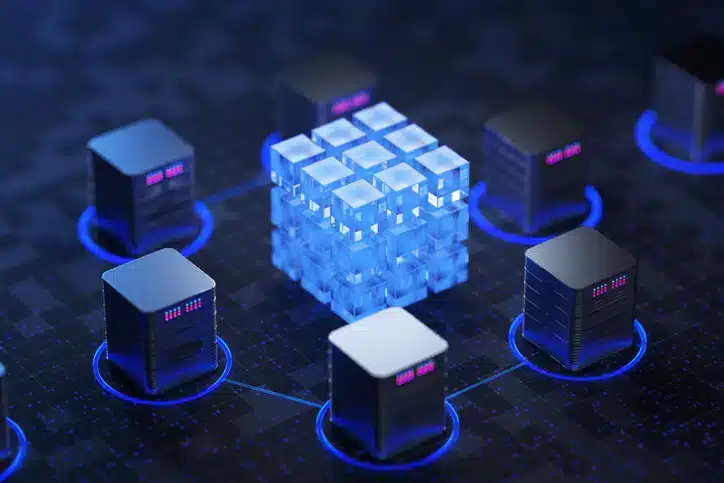What are APIs?
Actian Corporation
February 13, 2024

You’ve undoubtedly heard of APIs—ubiquitous yet often misunderstood. Curious to learn everything about APIs, or Application Programming Interfaces? Let’s uncover what they do, their benefits, and how they operate.
API—three letters without which companies today couldn’t seamlessly deploy their data strategies. An Application Programming Interface is a set of rules and protocols enabling two distinct software programs to communicate. It defines the methods and data formats allowed for information exchange, facilitating the integration of different applications or services.
The concept of APIs dates back to the early days of computing. In the 2000s, with the growth of the Internet and the rise of web services, APIs gained significant importance. Companies began providing APIs to enable the integration of their services with other applications and systems. In 2020, it’s estimated that nearly 2 billion euros were invested worldwide to develop APIs.
How Does an API Work?
In the world of diplomacy, there are interpreters. In the IT universe, there are APIs. This somewhat straightforward comparison sums up the function of an API. It acts as an intermediary, receiving requests and returning structured responses. An API operates by defining endpoints accessible via HTTP requests. These endpoints represent specific functionalities of the application, and developers interact with them using standard HTTP methods such as GET, POST, PUT, and DELETE. Data is then exchanged in JSON or XML format. The API specifies necessary parameters, expected data types, and possible responses. HTTP requests contain information like headers and query bodies, allowing data transmission. Responses provide status codes to indicate success or failure, accompanied by structured data.
API documentation, usually based on specifications like Open API, describes in detail how to interact with each endpoint. Authentication tokens can be used to secure API access. In summary, an API acts as an external interface, facilitating integration and communication between different applications or services.
What are the Benefits of APIs?
Using APIs offers numerous advantages in the software and system integration realm. They simplify access to an application’s features, allowing developers to leverage external services without necessarily understanding their internal implementation. This promotes modularity and accelerates the development of interconnections between essential business solutions for your employees’ efficiency.
Furthermore, APIs facilitate integration between different applications, creating interconnected software ecosystems. The key advantage? Substantially improved operational efficiency. Updates or improvements can be made to an API without affecting the clients using it. Code reuse is encouraged, as developers can leverage existing functionalities via APIs rather than recreating similar solutions, resulting in significant cost savings and shorter development timelines that contribute to your business’s agility.
Finally, APIs offer an improved collaboration perspective between teams, as different groups can work independently using APIs as defined interfaces.
Different Types of APIs
APIs form a diverse family. Various types cater to specific needs:
Open API
Also known as an external API or public API, it is designed to be accessible to the public. Open APIs follow standards like REST or GraphQL, fostering collaboration by allowing third-party developers or other applications to access a service’s features and data in a controlled manner.
Partner API
Partner APIs, or partner-specific APIs, are dedicated to specific partners or trusted external developers. These APIs offer more restricted and secure access, often used to extend an application’s features to strategic partners without exposing all functionalities to the public.
Composite API
Behind the term Composite API lies the combination of several different API calls into a single request. The benefit? Simplifying access to multiple functionalities in a single call, reducing interaction complexity, and improving performance.
Internal API
Designed for use within an organization, this type of API facilitates communication between different parts of a system or between different internal systems. It contributes to the modularity and coherence of applications within the company.
Different API Protocols
If APIs can be compared to interpreters, the protocols they use are, in a sense, the languages that enable them to communicate. There are four protocols:
SOAP (Simple Object Access Protocol)
Using XML, SOAP is a standardized protocol that offers advanced features such as security and transaction management. However, it can be complex and require significant resources.
XML-RPC (XML Remote Procedure Call)
The primary quality of this protocol is its simplicity. Based on XML, it allows the calling of remote procedures. Although less complex than SOAP, it offers limited features and is often replaced by more modern alternatives.
REST (Representational State Transfer)
Founded on HTTP principles, REST uses standard methods like GET, POST, PUT, and DELETE to manipulate resources. It exploits the JSON data format, deriving its simplicity, scalability, and flexibility.
JSON-RPC (JavaScript Object Notation Remote Procedure Call)
Lightweight and based on JSON, JSON-RPC facilitates the calling of remote procedures. It provides a simple alternative to XML-RPC and is often used in web and mobile environments.
Subscribe to the Actian Blog
Subscribe to Actian’s blog to get data insights delivered right to you.
- Stay in the know – Get the latest in data analytics pushed directly to your inbox.
- Never miss a post – You’ll receive automatic email updates to let you know when new posts are live.
- It’s all up to you – Change your delivery preferences to suit your needs.
Subscribe
(i.e. sales@..., support@...)











